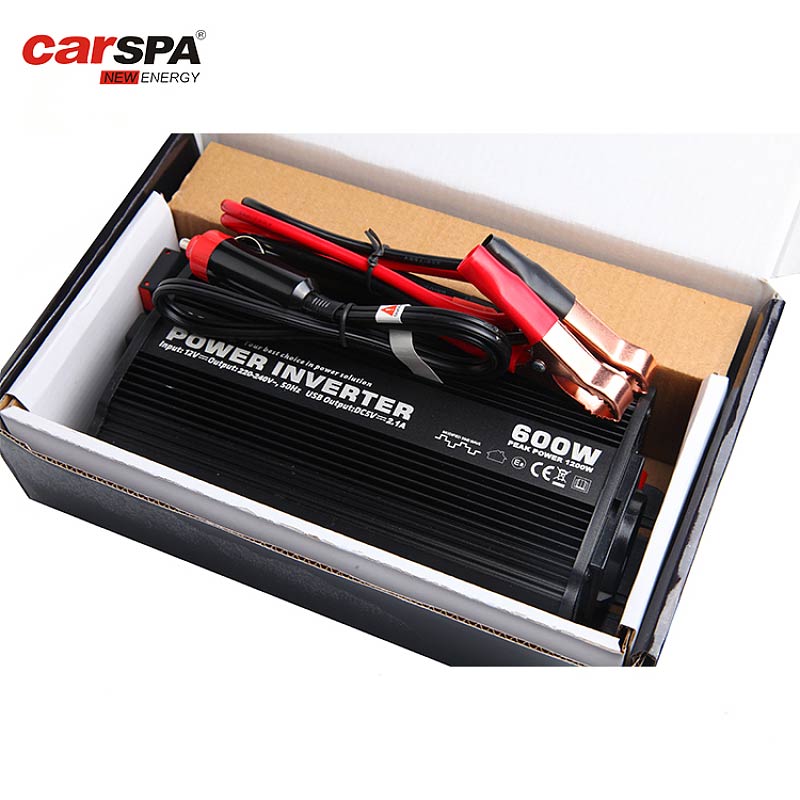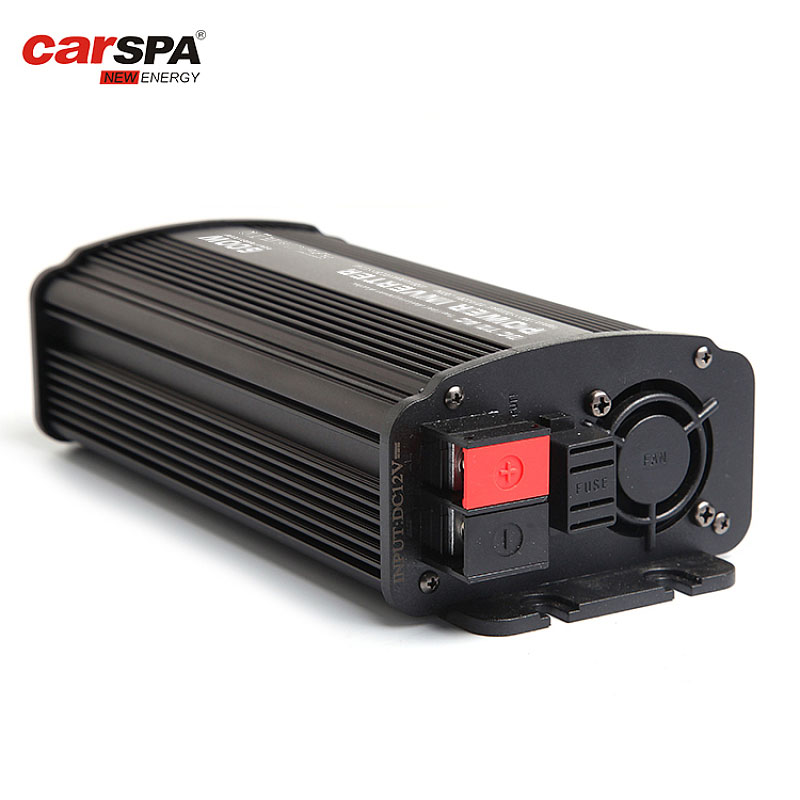Can I keep my RV inverter on all the time and what are the problems?
Inverters are used in RVs to convert 12V DC into standard 120V AC to power various household appliances. There are different factors to weigh when considering whether you should keep your RV inverter on for a long time and whether intermittent use will consume more power. The following will explore these issues in detail and propose some things to pay attention to.
1. Can I keep my RV inverter on all the time?
Whether the use of RV inverters can be turned on for a long time depends mainly on the design of the inverter itself and the environment in which it is used.
1.1 Design and technical characteristics of inverters
Technical specifications:
Rated power: The rated power of the inverter determines the power output it can continuously provide. If the load of the inverter exceeds its rated power when it is running for a long time, it may cause the inverter to overload and cause safety problems. Therefore, when choosing an inverter, make sure that its rated power can meet the total power requirements of all electrical devices in the RV.
Peak power: The maximum power that the inverter can withstand in a short period of time, usually higher than the rated power. Some electrical appliances require higher power than normal operating conditions when starting, so the inverter needs to be able to provide enough peak power to support the startup of these devices.
Heat dissipation design:
Fans and heat sinks: Long-term operation of the inverter will generate a lot of heat. Good heat dissipation design (such as built-in fans and heat sinks) can effectively reduce the temperature of the inverter and prevent equipment damage caused by overheating. Choosing an inverter with a good heat dissipation system can ensure its stable operation in high temperature environments.
1.2 Impact on batteries
Battery type and capacity:
Deep cycle battery: RVs usually use deep cycle batteries, which are designed for repeated charging and discharging. Different types of deep cycle batteries (such as lead-acid batteries, lithium-ion batteries) differ in charge and discharge cycle life and capacity retention. Choosing the right battery type and capacity is crucial for long-term operation of the inverter.
Battery capacity: The capacity of the battery (expressed in ampere-hours Ah) determines the total amount of energy it can store. In the case of long-term operation of the inverter, a large-capacity battery can extend the use time of the equipment and reduce the frequency of charging.
Battery Management System (BMS):
Protection Mechanism: BMS can monitor the status of the battery (such as voltage, current, temperature) in real time, and initiate protection measures (such as disconnecting the load) when abnormal conditions are detected to prevent the battery from over-discharging or over-charging.
1.3 Actual Use Scenarios
Campsite Stationing:
Fixed Use: When stationed at a fixed location for a long time, it is common for the inverter to run continuously, especially when there are solar panels to continuously charge the battery. The solar system can replenish the battery's energy during the day, ensuring that the inverter can run for a long time without affecting the health of the battery.
Use in Driving:
Vehicle Charging: During driving, the RV's engine is able to charge the battery, which means that the inverter can run continuously without affecting the battery power. However, it should be noted that the engine's power generation capacity is also limited, so when running multiple high-power appliances at the same time, you still need to be careful to prevent overload.
2. Will it be more power-consuming to keep the RV inverter on all the time and shut it down intermittently?
The energy consumption and power efficiency of the inverter are key factors in determining whether it should be turned on for a long time.
2.1 Energy Consumption Comparison
Continuous on vs. intermittent use:
Advantages of continuous on: Continuously turning on the inverter avoids the instantaneous large current loss caused by repeated device startup, which is especially important for motor-type devices. Continuous power supply can avoid the increased wear and power consumption of the device due to frequent startup.
Advantages of intermittent use: By intermittently shutting down the inverter, the inverter's own no-load loss can be reduced (it consumes power even when there is no load), saving battery power. Especially at night when power support is not required or when you are away for a long time, shutting down the inverter is an effective way to save energy.
2.2 Actual power consumption
No-load loss:
No-load current consumption: The current consumption of the inverter under no-load conditions is part of its no-load loss. Although this loss is not large, for long-term use, the accumulated energy consumption may affect the available time of the battery. Therefore, turning off the inverter when power is not needed can effectively reduce this part of the power waste.
Starting power and inrush current:
Starting current impact: Some devices (such as air conditioners, refrigerators, etc.) require additional power when starting, which may cause a significant increase in instantaneous current. Continuous power supply can avoid this high current shock, which helps to extend the life of the equipment and improve overall power efficiency.
2.3 Inverter efficiency
Load effect:
Full load and low load efficiency: Inverters are usually most efficient under full load because their conversion losses are maximized. Under low load conditions, the efficiency of the inverter may decrease because the no-load loss accounts for a larger proportion. Therefore, intermittent use of the inverter may be more energy-efficient when using low-power equipment.
3. Other matters to note
When using a car inverter, in addition to considering the pros and cons of long-term or intermittent use, there are some important considerations to ensure safety and efficiency.
3.1 Inverter selection
Rated power and peak power:
Reasonable selection: It is very important to choose the right inverter power. The rated power should meet the needs of all electrical appliances running at the same time, while the peak power should be high enough to support the starting power requirements of the equipment.
Pure sine wave vs. modified sine wave inverter:
Power quality requirements: Pure sine wave inverters provide higher quality power output and are suitable for equipment with higher power quality requirements, such as precision electronic equipment and medical equipment. Modified sine wave inverters are relatively cheap and suitable for general household appliances.
3.2 Safety precautions
Overheat protection:
Automatic protection function: Ensure that the inverter has an automatic overheat protection function. When the temperature is too high, it can automatically reduce the power output or shut down to prevent damage.
Cable specifications:
Choose the appropriate cable: Select the corresponding specification of cable according to the power of the inverter to ensure safe operation under maximum load and prevent fire caused by overheating of the cable.
Fuse or circuit breaker:
Circuit protection: Install a fuse or circuit breaker of appropriate specifications at the input end of the inverter to prevent short circuit or overload from damaging the circuit.
3.3 Battery maintenance
Regular inspection:
Firm connection: Regularly check the battery connection to ensure that the wiring is firm to prevent unstable power supply caused by poor contact.
Battery balancing:
Multi-battery pack management: For battery packs composed of multiple batteries, use a battery equalizer to ensure the balance of power between each battery to prevent the entire battery pack from being affected by over-discharge of a single battery.
Storage power monitoring:
Power monitoring equipment: Use power monitors to monitor the charge and discharge status of the battery in real time to prevent over-discharge of the battery.
3.4 Renewable energy supplement
Solar energy system:
Efficient use of solar energy: By installing solar panels and using efficient solar controllers (such as MPPT controllers), stable supplementary power is provided to the battery to reduce dependence on generators.
Generator assistance:
Emergency power support: In rainy weather or when high power is used, use generators to charge the battery to ensure the continuity and stability of power supply.
Conclusion
Whether the RV inverter can be turned on all the time depends mainly on the actual use needs and the design capabilities of the inverter. It is feasible to turn on the inverter for a long time in some cases, but it is necessary to ensure that the inverter and battery system can withstand the corresponding load and consumption. Intermittent use of the inverter can save power to a certain extent, especially during periods when power demand is not high.
In order to optimize the use of the inverter, users should choose a suitable inverter according to the actual situation, ensure good heat dissipation and battery management, and consider using renewable energy as a supplement. During use, paying attention to safety measures and equipment maintenance can effectively extend the service life of the equipment and improve power efficiency.







